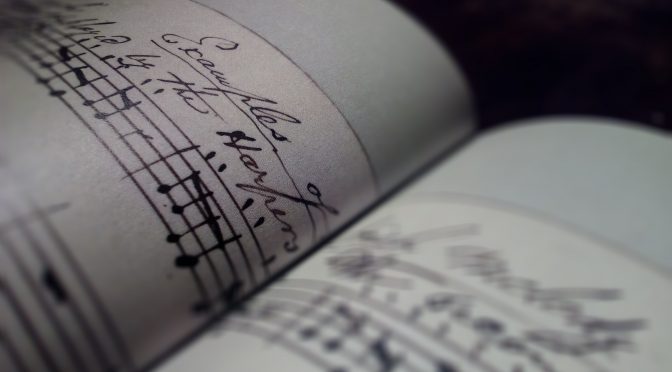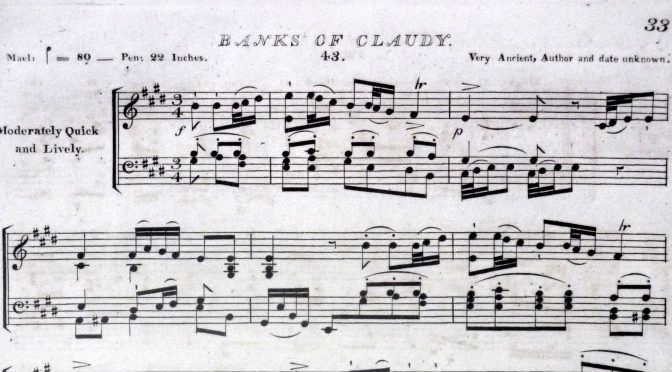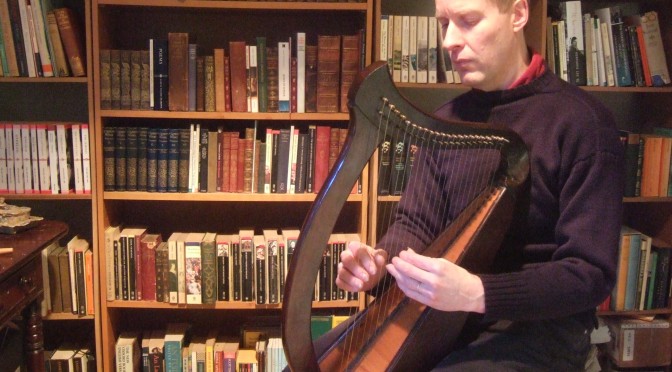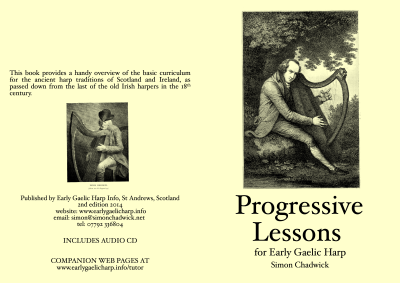Today I sent out an announcement of the availability of my new book, “Gestures”. You can find out more here: www.earlygaelicharp.info/gestures
I considered many different options for publishing this book, including approaching another publisher, though I prefer to publish in house through earlygaelicharp.info. Normally, one would use a commercial printing company to make and bind the books, but a conventional printers needs a run of 1000 to make economic sense – the setup costs are high in relation to the cost per unit. I was not sure this made sense for such a niche specialist publication.
I also considered using a print-on-demand company. These will print and bind one copy at a time for you – Lulu is perhaps the best known, though there are others who focus more on the needs of small publishers. However a big problem with these is the cost of shipping the printed books from the company; what you gain in flexibility of being able to order small numbers, you lose in the economy of scale for delivery.
In the end I have decided to keep this book entirely in-house, and it is being published as a hand-made book. Below you will see a photo of the first batch being assembled in my workshop. The big advantage of this method is that it gives me complete control over the design of the binding – in this case it is traditionally hand-sewn to make sure that the book will easily open completely flat – an important consideration for a music book, that will be placed on a music stand.
Anyway, I enjoy bookbinding as much as book design and writing!









